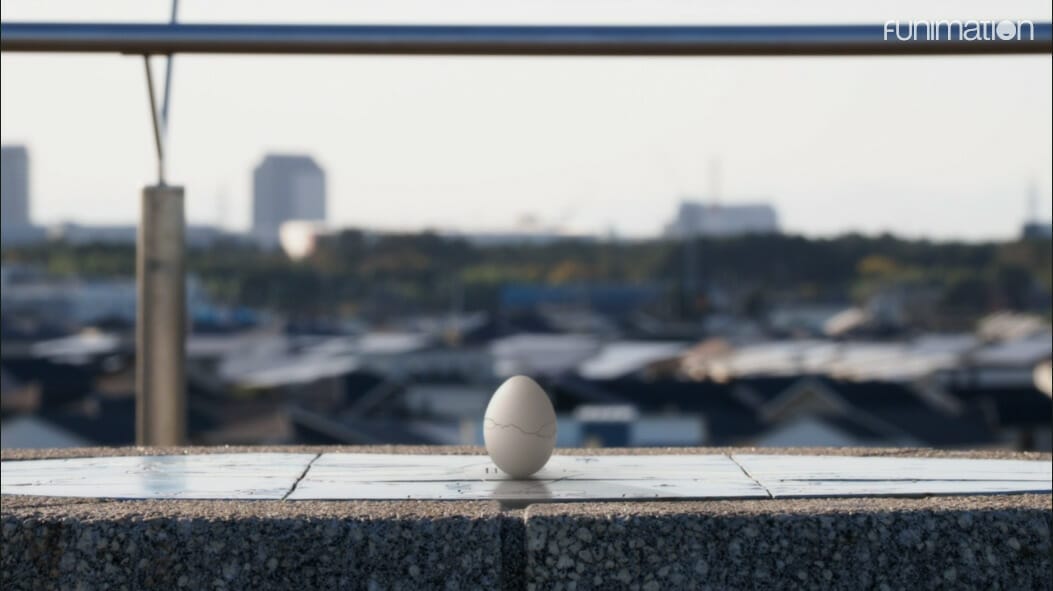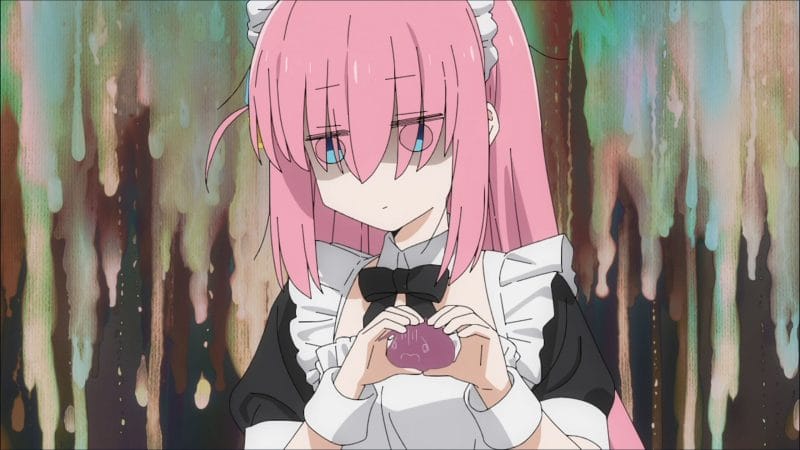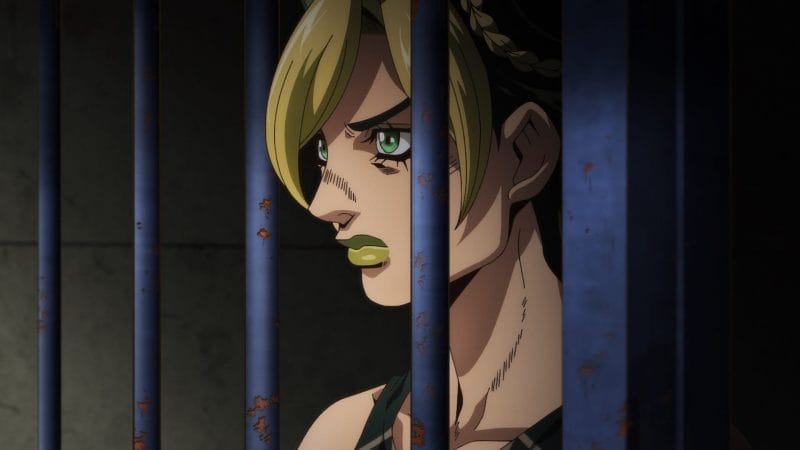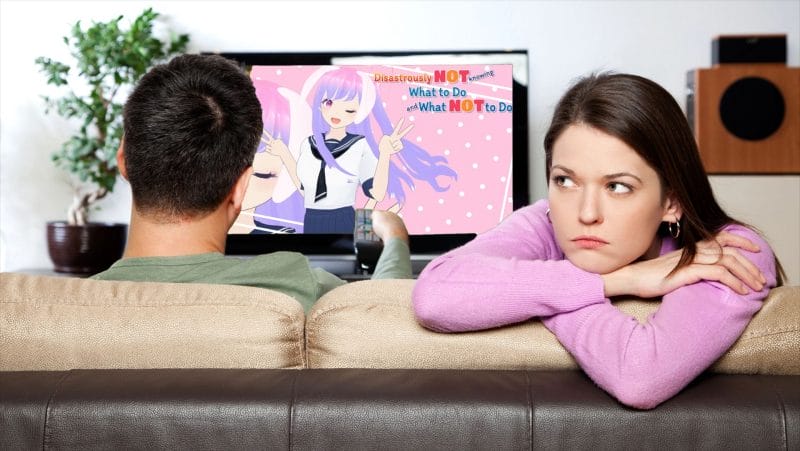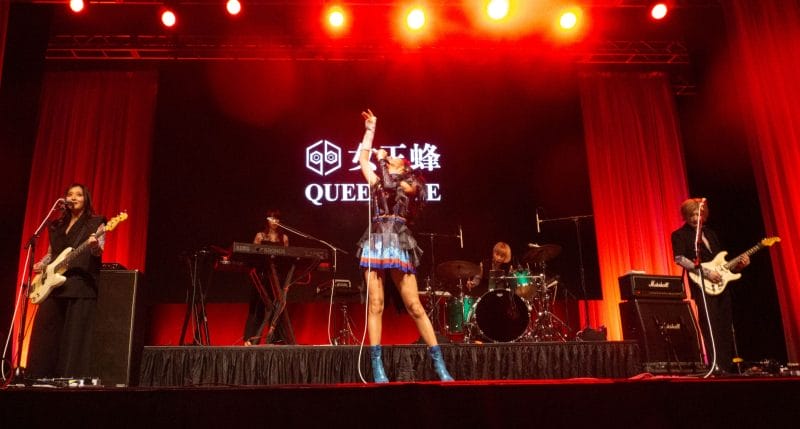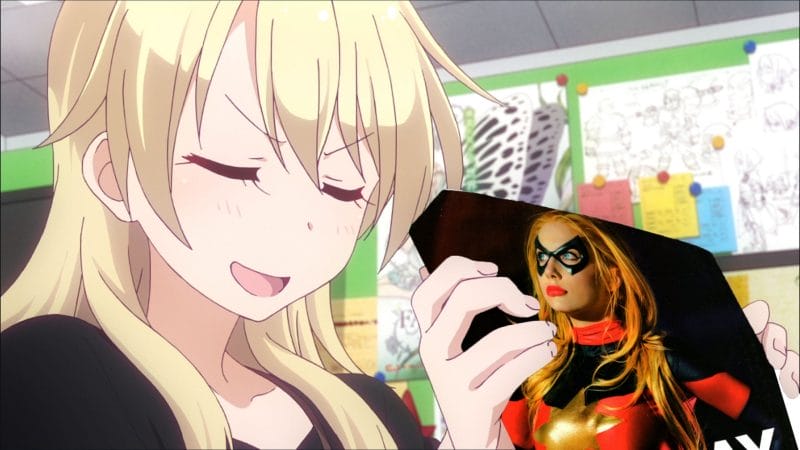Content warning: this article contains discussion of suicide, self-harm, and sexual assault.
Wonder Egg Priority is both a promising new direction for the anime industry and a herald of its limitations. It’s a personal and heartfelt statement of solidarity that in its worst moments is morally reprehensible. At a tough time in my life it gave me a reason to live, but I’m almost certain that it’s hurt somebody else. How do you measure something like that?
I had a dream last night about four eggs. One holds love, another pain, the third poison. The fourth egg is tricky; it slips from sight, as if it was never born. Can you see the fourth egg from where you are, on the other side?
I.
Wonder Egg Priority is impossible.
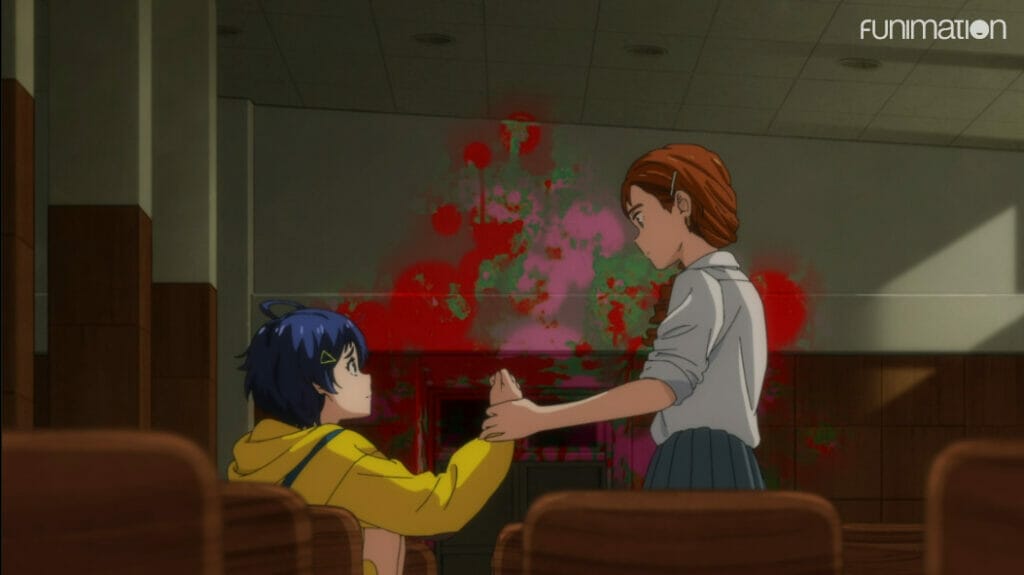
The show opens with a striking and surreal premise: Ai Ohto, a teenage girl who loses her friend Koito to suicide, obtains an egg from a mysterious gacha machine. When smashed in her dreams, this egg summons the spirit of a young suicide victim who must be protected from horrendous monsters so as to accumulate enough credit to summon Koito’s spirit from the dead. Suicides? Child death? Dreams? These are the kinds of themes and tropes that a creative writing professor would warn their first-year students away from: potentially effective, but explosive and damaging if handled carelessly.
Then you add the final touch: the show’s direction is heavily influenced by Naoko Yamada, one of the best and most famous directors at legendary anime studio Kyoto Animation. Yamada’s work subtly depicts the lives of ordinary kids through obsessive detail, simulated camera work and flower language. Wonder Egg Priority director Shin Wakabayashi and his cohort of fellow animators use Yamada’s tools to instead capture extremes: anguish, fear, self-harm. The craft with which Kyoto Animation might render a nostalgic memory is instead emulated to depict the shattered corpse of a teenage girl.
Wonder Egg Priority should not work. But Wonder Egg Priority is frequently great. The first episode is a masterpiece, a viscerally strange and moving drama that saw comparisons to the work of directors Kunihiko Ikuhara and Satoshi Kon. Each successive episode saw the debut of a new, young and often inexperienced director, who would proceed to hit their assignment out of the park. Every week, a chain of incredible moments: the revelation of the first Wonder Killer, Ai’s run through a lighthouse of knife-wielding egg monsters, Neiru’s encounter with the woman with long hair. The bathroom fight. Momoe’s first kiss.
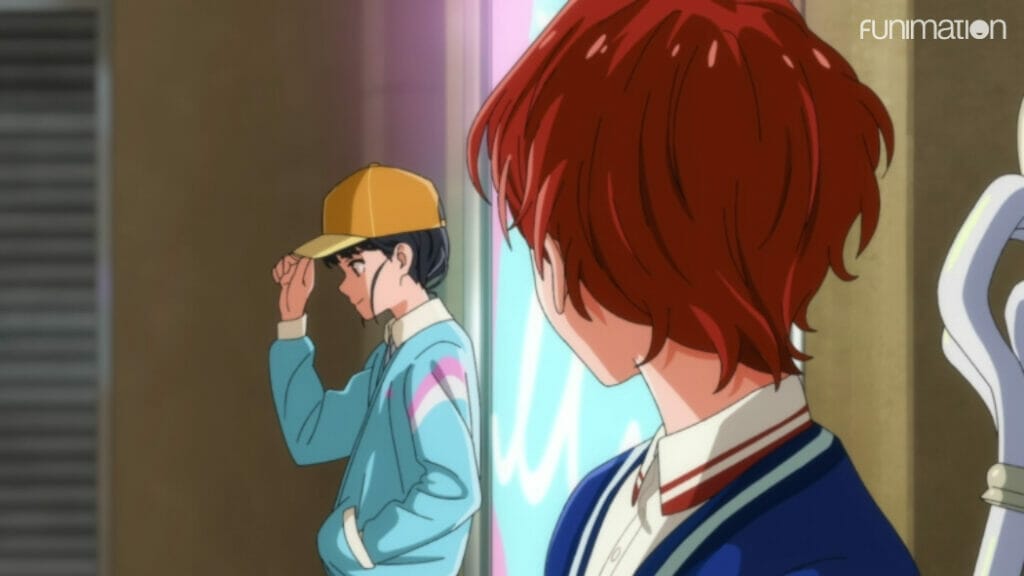
There were folks who found Wonder Egg Priority unbearably tense, there were others who found it crass. I can sympathize. Each week the series would courageously belly-flop into topics that could charitably be read as “fraught”. But the show was so good at those small moments of triumph: Ai overcoming fear, Rika facing her demons and choosing to live another day. For much of its run, Wonder Egg Priority was not simply about the cruelty of the world: it was about how even if you could only ever hope to challenge that cruelty in your dreams, giving its victims just one moment of relief was a victory. Making it through another day intact together with your friends was a victory.
I’ll probably always hold Wonder Egg Priority close to my heart. Even now, I consider several episodes to be all-time classics. But Wonder Egg Priority was a disaster. So what happened?
II.
Wonder Egg Priority is impossible.

By now, plenty of knowledgeable folks have already written about the hell that was Wonder Egg Priority’s production. To summarize: the series was on fire out of the gate, crashed so hard around the sixth or seventh episode that they had to take an unplanned recap episode, and then crashed again to such a degree at the end that:
- At least one producer was hospitalized
- The series was unfinished, with a “special episode” announced to wrap up the story in June
- The eleventh episode as well as the special relied heavily on the contributions of foreign fans called in at the last second to help bear the load
To be fair to Wonder Egg, anime productions collapse all the time. Far too much anime is made these days, stretching the industry’s production capabilities to the breaking point. Wages remain stagnant, schedules are tight at best. Once in a while, a talented animator dies at their desk; others simply leave the industry due to poor health or exhaustion, or leave for better-paying gigs like Chinese animation. Meanwhile, producers recruit naive fans from abroad to live their dreams, exploiting their passion to keep the wheel turning. Frankly speaking, it’s a miracle that anime is finished and released on time at all. Perhaps it’s always been a miracle.
The team working on Wonder Egg Priority was outrageously talented. At the show’s peak, every element from the character and creature designs to backgrounds to music to direction were working in sync. It also must be said that much of the staff of Wonder Egg were young. The fantastic early episodes are impressive not just because of their quality, but because of the relative inexperience of the folks that made them. It really felt like the series was the birth of a whole new generation of artists, and a starting line for anime’s future.
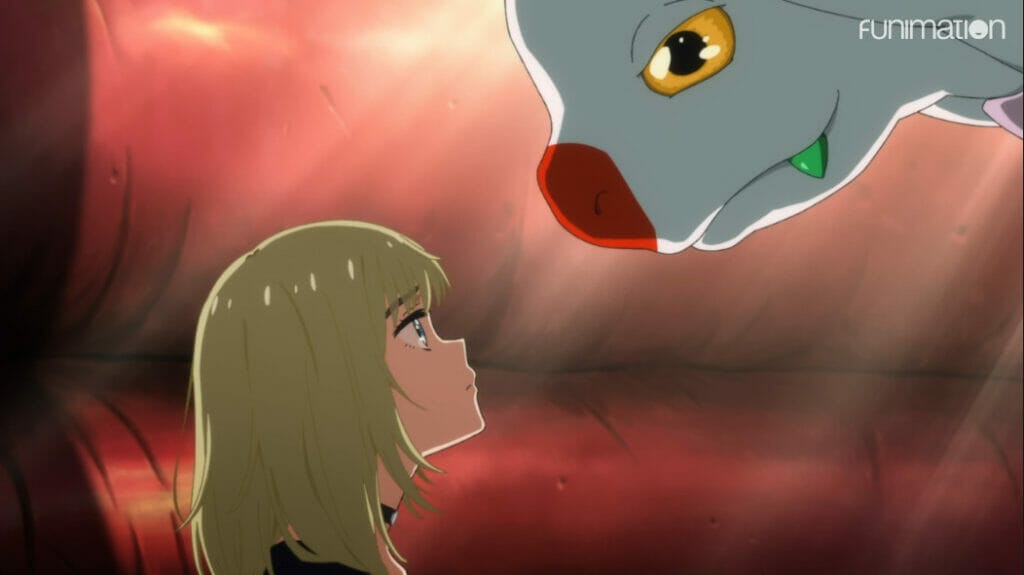
But their approach was flawed from the start. First, that the team could not hope to achieve the fidelity they wanted on a standard anime television budget and schedule. Second, as a close-knit small team, they simply did not have enough people on board to do everything that needed to be done, despite the show’s producer moving heaven and earth to keep the show alive. Rather than designate an episode as a breather to give the crew time to rest and recover, or outsource to another studio, the team personally managed each episode and strove to pack every single one with astonishing setpieces and ideas. This worked fantastically until the show was no longer physically possible to produce, at which point it became a black hole that endangered the team’s health and sanity.
Could history have turned out differently? If Wakabayashi had scoped the project appropriately, if the producer had taken steps to rework or delay the project, if the broadcasters had simply chosen to move the airing of the series to a later date: perhaps Wonder Egg Priority might have landed gracefully. As it stands today, Wonder Egg was finished only through the devoted efforts of its fans and by a smart and hardworking team that refused to quit. Its place in the history of the medium is assured if only because it represents a potential benchmark in the recruitment of foreign animators; but also because (despite the enormous talent of the staff and the respect in which they hold each other) it stands as a cautionary tale for all artists who blindly test their own limits, and producers who let their talent skydive without parachutes.
III.
Wonder Egg Priority is impossible.

If Wonder Egg Priority was delayed, if Wakabayashi and crew were able to give the final episodes the time and attention they needed, there’s every chance that the show may have been as good as they clearly wanted it to be. But there’s just as much of a chance that the show’s narrative would have fallen to pieces anyway.
Much has been made of the involvement of Shinji Nojima, the most experienced artist associated with the Wonder Egg project. Looking through his back catalogue of live-action TV drama, especially his breakthrough work Kou Kou Kyoushi (High School Teacher), you see a writer devoted to pushing the boundaries of what can be shown on Japanese television as far as possible. Student-teacher romance, homosexuality, children with disabilities, familial abuse—nothing is off the table. Shinji Nojima undoubtedly deserves some credit for expanding the horizons of Japanese television in the 90s. Wonder Egg, as his anime writing debut, presented an exciting opportunity for Nojima to play with his ideas in a new medium, with talented young animators bringing his stories to life. But what does Shinji Nojima, an older man who doggedly pursues his pet themes and preoccupations in Wonder Egg Priority, convey through that storytelling?
To examine where Wonder Egg Priority’s narrative priorities lie, we need to examine whom the writer chooses to give the benefit of the doubt and whom he chooses to vilify. Let’s talk about three characters: Sawaki the sketchy teacher, Frill the eleventh-hour villain of the story, and Ai’s friend Koito. Frill is the hardest to pin down, if only because we know the least about her. Introduced in the tenth episode of the series, she’s an artificial human driven by spite to ruin the lives of the men who created her.
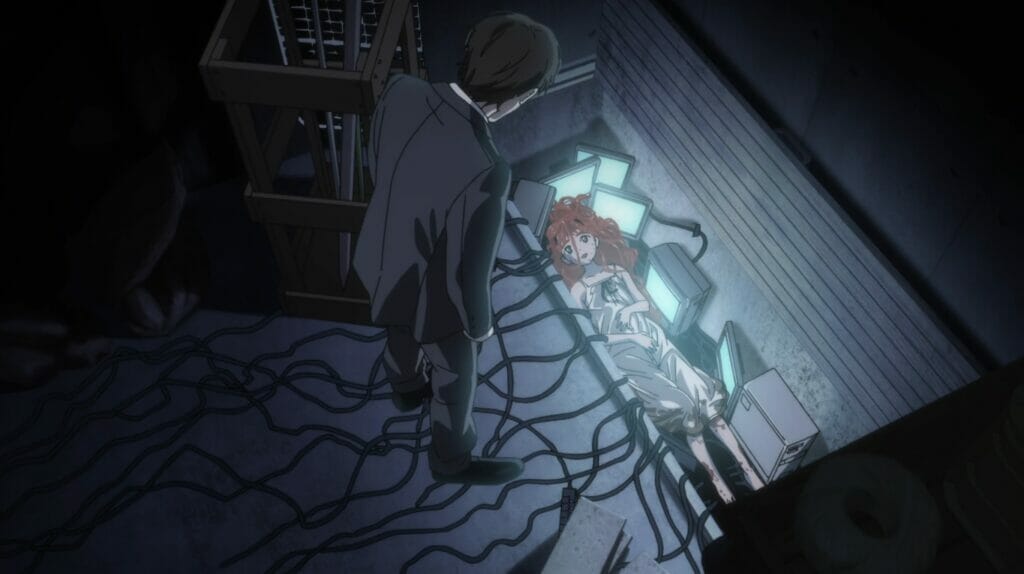
On one hand, Frill is a cliche: a girl-monster who kills out of jealousy and is too immature to understand the consequences of her actions. But on the other hand, isn’t there an inherent tragedy to Frill, a young woman trapped in eternal childhood by two self-obsessed scientists? A frustrated teenager locked in a basement for her transgressions? We’ll never find out, because the series has no idea what to do with her. Frill’s minions attack Ai’s friends and eat their magical pets, but the series ends before Frill does very much herself. With so little screen time, it’s tough to say if Frill is the grotesque creation of a misogynist or is (intentionally or unintentionally) something more complicated.
Sawaki is far better defined. An art teacher at Ai’s school, we see him with Koito in one of Ai’s early flashbacks. We find out that he is dating Ai’s mother, that Momoe is a relative and thinks he’s great. But from the first time Ai sees him, she can’t help but think of him as a threat: could he have driven Koito to suicide? Why is he insinuating himself into Ai’s family? As the show aired, writers like Steve Jones and Emily Rand pondered the potential villainy of Sawaki, and how real-life abusers often appear as ordinary people rather than cartoon villains.
But that’s not what happens in Wonder Egg Priority. First, Ai’s friend Neiru drops the possibility that Ai finds Sawaki threatening because she’s attracted to him. Then Ai attends Sawaki’s art exhibit, which is seemingly attempting to engage with the troubles of teenage girls like her. Finally we see Ai insist as she fights the monstrous Wonder Killer version of Sawaki in her dreams that the Sawaki she knows is not a bad man. Perhaps in another world, a cruel and violent Sawaki could exist. But our Sawaki is revealed to be a misunderstood and sympathetic person who only wants what is best for the kids under his care.
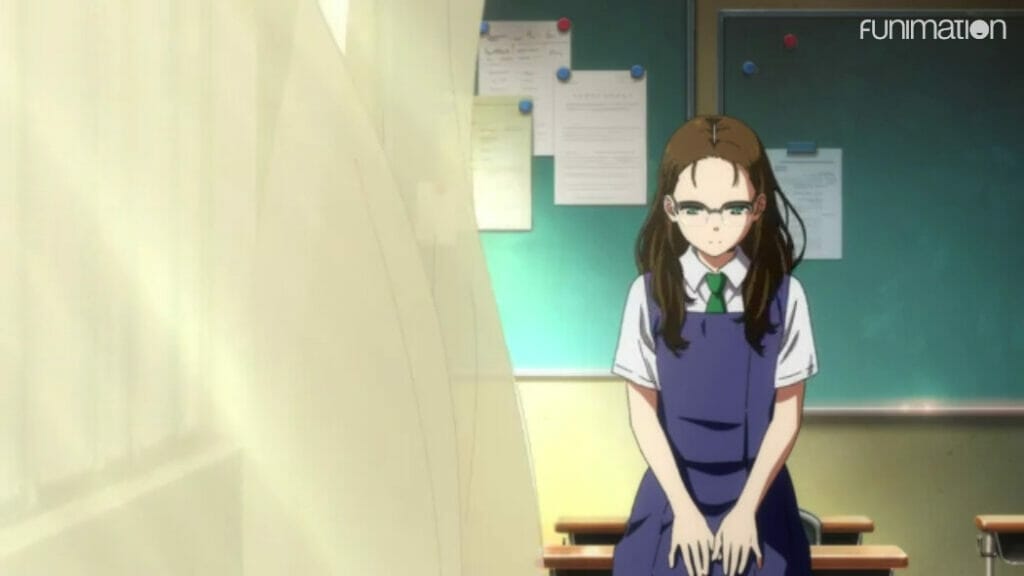
Finally there is Ai’s friend Koito, the dead girl who serves as Ai’s initial motivation. The first episode frames her relationship with Ai in tender and even romantic terms: the way she holds Ai’s foot in bed, the striking scene where Ai literally drinks her tears. But at the end of the series, Koito is revealed as an unstable teenage girl who only ever saw Ai as a curiosity, and wanted Sawaki for herself. In the penultimate episode it is her shadow along with the evil Wonder Killer version of Sawaki that pressure Ai to commit suicide. When she is brought back to life in the final episode, she seems to have forgotten everything about Ai and abandons her at once. Despite beginning the series as a victim that spurs Ai to broaden her horizons so as to uncover the truth, Sawaki’s words at the end damn Koito as a villain: a silly child who tempts men and finally chooses to kill herself for fun.
Wonder Egg Priority demonstrates sympathy for Ai and her friends. It has sympathy for the egg wards, condemned to death by societal forces that manifest as Wonder Killers. It valorizes Sawaki as misunderstood, and even offers Frill space for interpretation. But the series doesn’t give a shit about Koito. Not only does it frame her actions as ludicrous and inexplicable, but it directly blames her for harming the reputation of innocent men like Sawaki.
Koito is not just Wonder Egg Priority’s single most glaring failure of empathy, but an abdication of responsibility. That Wonder Egg Priority even raises the notion that some suicide victims out there deserve what they got is so evil and preposterous it threatens to sink the entire project. Once you know Koito’s fate, it infects the rest of the series like a malevolent Wonder Killer. Why is it that in a series all about how the vulnerable are abused and mistreated, the character for which the series holds the most ire is a suicidal teenage girl?
You might pin the blame for this on Shinji Nojima, the writer who (as far as we know) exerted the most influence on the series. But frankly speaking: besides Nojima’s input, what made Shin Wakabayashi think he was qualified to tell this story? What made his crew of predominantly male directors (with the exception of folks like creature designer/director Maiko Kobayashi and directorial legend Noriko Takao) think they were qualified to tell this story? Why is it that anime that tackle female adolescence—even examples I like, such as Yuri Kuma Arashi or After the Rain—continue to be predominantly directed and produced by men? You can’t solve the anime industry’s fundamental problems by simply replacing male CEOs with female ones. But maybe if you had more women in positions of influence, you’d have a higher rate of nuanced, specific output and fewer well-intentioned but outrageously blinkered projects like this one.
IV.
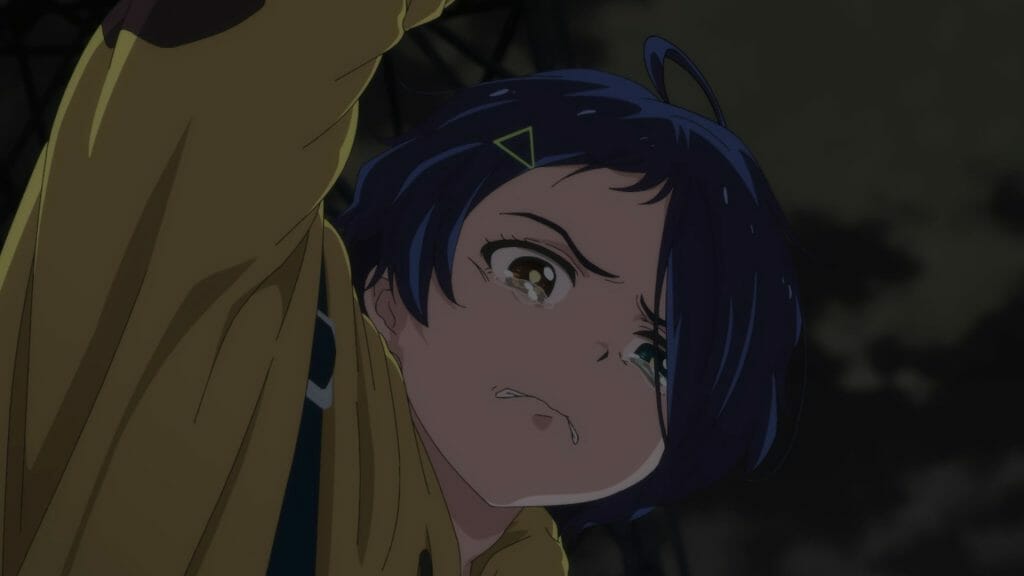
Wonder Egg Priority’s greatest strength and most debilitating weakness is that it wanted to be more. It wasn’t enough to push the boundaries of narrative and social taboos. It wasn’t enough to attempt the visual quality and attention to detail of a feature film on a weekly schedule. The creators of Wonder Egg wanted to do all of these things, at once, with as few compromises as possible. I can’t help but admire Wakabayashi and his crew for trying, and being as successful as they were for so long. In the same way, I can’t help but regret that Wakabayashi and his crew sacrificed so much for a goal that was unreachable from the start.
In a just world, Wonder Egg Priority would serve as the beginning of long and storied careers for Shin Wakabayashi, Yuta Yamazaki, Yuki Yonemori, Yuichiro Kumuro, Shinichiro Ushijima, Keisuke Shinohara and Maiko Kobayashi. Yet after finishing the series, I can’t help but think: after all of that, who among them would want to return? And if they did, would there be a place for people like them? With some exceptions, today’s anime industry aggressively punishes creativity and ambition. It’s tougher than ever to justify experimentation when just meeting deadlines is challenging enough. Fans themselves will lash out at work that doesn’t meet their standards. Wonder Egg Priority will be remembered as a historic convergence of talent, but time will tell whether it represents the messy birth of something new or a nascent future killed in the nest before it could properly hatch.
Wonder Egg Priority’s narrative, thematic and character shortcomings will continue to aggravate me whenever the series comes to mind. I’m already thinking nervously about how certain sections on rewatch might shrivel and die with foreknowledge of the show’s later twists. Yet the relationship between Ai, Neiru, Rika and Momoe still means a lot to me. Their interactions are the heart of the series, and remain consistently surprising even as they’re forced out of the picture by the accumulating weight of the show’s high-concept ideas and its bitter lack of empathy for its other female characters. I hope that in his future work, Wakabayashi has the courage to put these kinds of close-knit relationships front and center rather than distracting from them.

You can say Wonder Egg Priority is impossible, but then you have to ask the question: which Wonder Egg Priority? The good one or the bad one? The smart one or the cruel one? The version of Wonder Egg I hold in my heart may be different from yours. It’s tempting to imagine an infinity of other readings, an infinity of Wonder Eggs. But infinity is not the same as impossibility. Wonder Egg Priority is finished. The future of its creators lies elsewhere. Just like Ai chose life over the vacuous abyss, I have to move on.
But out of the corner of my eye, I swear I can still see it. The fourth egg.


